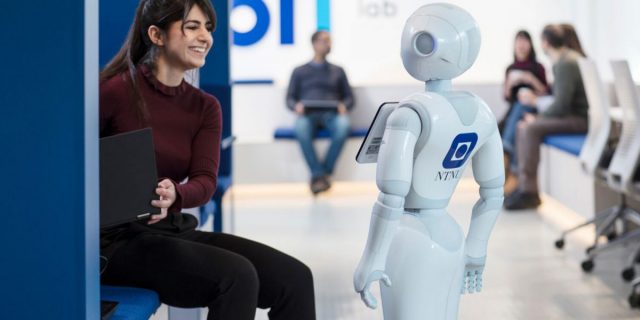The perfect storm: 5G, IoT and AI

Our society stands to be transformed by the combination of three technologies, contributing to a “perfect storm”. Here, Telenor’s President and CEO, Sigve Brekke, expands on how the application of these technologies, could either create untold opportunity, or see competition stifled and monopolies strengthened.
More than a few of us were surprised in 2018 when Google demonstrated how their artificial intelligence personal assistant can now ring unknowing hairdressers and make a booking. It’s perhaps a little uncomfortable to think that soon we may not be able to tell the difference between a machine and a person. That, though, is beside the point.
Find niche opportunities and own them
Google is the unprecedented world leader of internet search. Each time you type a sentence into Google, and click on one of the links that comes back, you provide the AI system with a data point. From this, it learns how to improve next time. As a result, the incentive to develop a competing service to Google lessens. As you’re not alone, AI will drive a learning internet service that is best at what it does, and will stay that way. Ultimately, this will lead to a so-called ‘data monopoly’; better access to data because it’s the best at giving better access to data in a positive spiral.

If other players are to compete with products and services using AI technologies, it must be in areas where no-one has already established a position. This could be a business that has a unique combination of customer, product and process data, or it could be an area where the data has begun to flow such as the internet of things (IoT).
Internet of Things will accelerate AI
At Telenor, we believe IoT will be a key accelerator for artificial intelligence. Our Norwegian mobile network is fully IoT-enabled with narrowband IoT technology (NB-IoT) and we are looking to upgrade networks in our other markets in the same way. To foster innovation especially within IoT, we’ve initiated Start-IoT and partnered up with the IoT ProtoLab in Trondheim, Norway. In addition, several of our business units work closely with IoT startups and entrepreneurs.

IoT provides opportunities to produce massive datasets that can feed machine learning and AI algorithms, turning data into insights. This is why the IoT ProtoLab is closely linked with the Norwegian Open AI Lab, an open research facility initiated by Telenor, SINTEF and NTNU that now also includes several other corporate partners ranging from finance to high-tech. Beyond Norway, Telenor’s subsidiary in Thailand, dtac, has established a similar AI lab together with a local academic partner. Common to our initiatives is that they’re open and inclusive, and that the entry ticket is to subscribe to sharing.
The race to the data
The internet of things is essentially about fitting things and machines with sensors that report on position, temperature, air quality, acceleration, pressure or anything of any scale that we could be interested in. You can already buy footballs that report how hard they have been kicked. The alarm in your house notices if someone is away or at home, and you can use apps to open your door. These are all examples of IoT.

Common to all IoT is that it generates data that can potentially be used to build learning models – AI – that can be used to provide predictions, make decisions, or automate value chains. Value is created when the old ways of doing things are replaced by more effective or entirely new products or services, or when new business models appear. It isn’t clear yet which this is, so it will be those early birds and early experimenters who will be best positioned to take this out into the world. Why? Because they will be first to the data.
Beyond the tipping point with 5G
So far AI has been driven from the ‘personal internet’, and particularly from data generated by us when we use smartphones. From 2020, Telenor and others will begin to build the next generation’s mobile internet – 5G. One of the most notable changes from 4G to 5G will be the capacity the network will have to support the internet of things. 5G allows up to 100 times more connected things than 4G. When it’s configured for it, a 5G network will be able to handle 1,000,000 things over one square kilometre.

Using an item connected electronically to the internet will cost comparatively little. In fact, it could be so low that is economically viable to equip all parking spaces with a sensor that registers whether it is available, or to trace all cases of fresh fish from the fish farming facility to the freezer – because data can be used to build AI solutions that help us optimise business or predict problems.
A better future
Together, 5G, IoT and AI represent a ‘prefect technological storm’ and a potent opportunity for value creation. Low cost, and huge capacity opens itself to the connection of ‘things’ at large scale. This generates data that makes it possible to build new AI solutions that can make industry more effective, transport more environmentally friendly, and products and services will be better suited to our needs.
The challenge in managing this perfect storm is simple: we stand before an opportunity society should be positioned to derive practical use and value from, but to do so, states must form national strategies that provides more study places, prioritise research and development and drive an acknowledgement among business and the bureaucracy that they cannot afford to miss this boat.
Only then can the perfect storm become the perfect opportunity.

Sigve Brekke is President and CEO of Telenor Group.
Explore more
Read about our 5G pilot in Norway
Find out how Telenor works with Artificial Intelligence